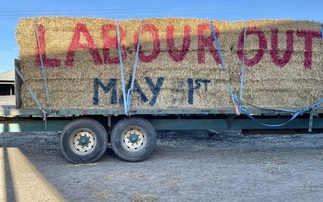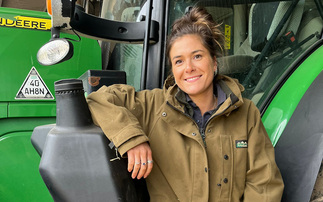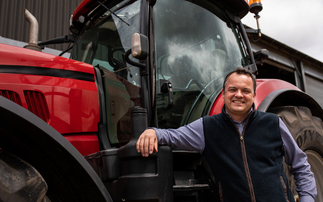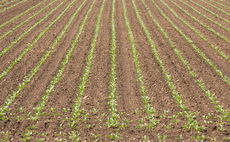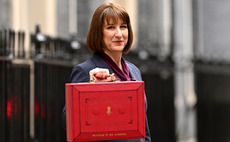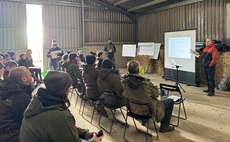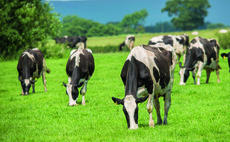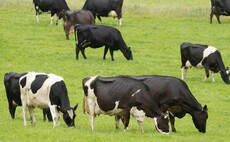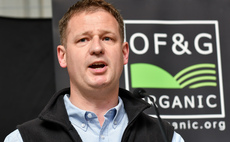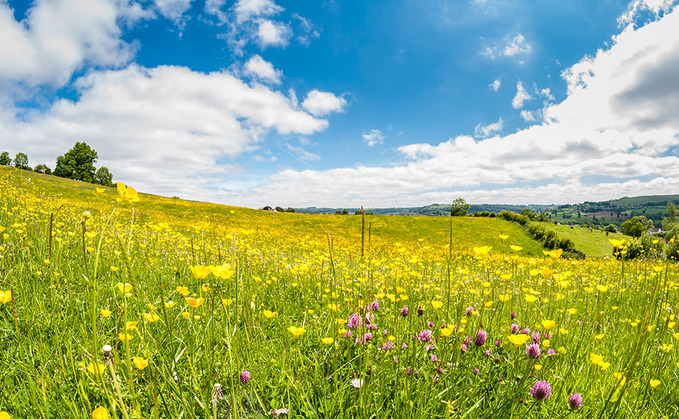
In the latest instalment of the Farming With Nature series, Jane Thynne explores how farmers can make space for nature and boost biodiversity on their land.
Following the UKs exit from the European Union in 2016, Governments across the country were given a unique opportunity to rewrite agricultural policy.
For many years at least as far back as 2005, when Defra and the Treasury published their Future of the Common Agricultural Policy report politicians in Westminster have advocated scrapping direct support and moving to a public money for public goods principle.
In 2021, this vision was finally realised, as the UK Government unveiled its Environmental Land Management (ELM) scheme a new system of support for agriculture that sought to move the focus of farming away from traditional food production and towards the natural landscape. It was announced that money would be made available for works which included the restoration of habitats and waterways, as well as woodland creation.
Fair
It is fair to say the policy which is now under review has been met with mixed reactions, but for a number of regenerative and organic farmers, a move to champion greater on-farm biodiversity was long overdue.
Vicki Hird, head of sustainable farming at the Sustainable Farming Campaign, said: Sadly, biodiversity has got more fragmented as farms have got bigger.
Working large monocultures with fewer rotations of very similar crops year after year is not good for biodiversity in the field. Fungicides, pesticides and synthetic fertilisers obviously have a huge impact on the soil.
But the good news is all these problems are tackled using natural methods in a truly regenerative system, which is always going to be better for biodiversity.
Core
Holly Story, farm business consultant at land agents GSC Grays, said biodiversity is at the core of regenerative farming, pointing out crop rotations, temporary herbal lays or planting grasslands will encourage it.
At the end of the day, biodiversity is having that rich mix of living things, so the more we can do to create that in agricultural systems, operations and farmland habitats, the better for biodiversity.
For Andy Dibben, an organic fruit and vegetable grower at Abbey Home Farm, Cirencester, the sole purpose of his 15-year regenerative undertaking has been to enable a diverse range of species to thrive around and in the farm setting. The result, according to Mr Dibben, is a more sustainable landscape and business.
He said: As farmers, we work in a beautiful office, but it is a quiet one there is not much wildlife out there at the moment unless you are somewhere where the land is proactively managed.
Identical
If you are growing 1,000 acres of genetically identical wheat year after year, you are never going to have much biodiversity because there is not much wildlife that can interact with 1,000 acres of genetically identical wheat.
But he believes there are steps farmers can take to help nature thrive on their land.
All farmers know that farming is a long game and there are no promises that regenerative will bring a quick fix to all your business problems. But in terms of biodiversity, you would be surprised just how quickly the wins come in, he said.
A few years ago I planted some willow trees they were just whips, no leaves. To be honest, they looked like sticks. But by the following spring the first thing to emerge was one single catkin. As soon as I spotted it I went over to have a look and it had two bumble bees on it. Nature will move in straight away if you give it a place.
Trees are a habitat in themselves, providing a home and food for insects and birds, not to mention the benefits they bring to the soil.
Space
An important part of increasing biodiversity, as both Ms Hird and Mr Dibben agree, is giving nature space. On arable land, the obvious way to do this is by alternating and rotating crops more frequently. This in turn will encourage soil health, reduce erosion and increase nutrients.
Diversity of crops is key to make it a mixed habitat. We have wildflower strips every 10 beds. We bring it right in and do not just leave it to the corners and the sides, said Mr Dibben.
We include lots of flowers in our green manure. We always allow our cover crops to flower as one of the key currencies on our farm is pollen.
I try and keep pollen available for as much as the year as possible - from the early catkins in February to the late flowers of September. You have to remember that many pollinators are also predators, so by making pollen available we are fuelling their flight.
Organic
Roger Kerr is the chief executive at organic certification body OF&G Organic. He believes that by farming organically, regenerative benefits are guaranteed, leading to a swell in biodiversity. In fact, Mr Kerr claimed on average, organic farms host 34 per cent more biodiversity than non-organic ones.
According to the OF&G manifesto, a move to organic and regenerative methods will create humus-rich topsoils that will restore biodiversity above and below ground; retain water and contribute to water pollution solutions.
If you seek to work with nature, that is the thing that will encourage biodiversity, said Mr Kerr.
He pointed to Cholderton Estate, an organic business that was chosen as one of Defras Test and Trial farms in the development of ELM.
Naturalist
Situated on the Hampshire/Wiltshire border, its owner, Henry Edmunds, is a keen naturalist who wanted to balance agricultural production with the preservation of the countryside, in particular animal and plant habitats.
During the trial period, it was found that in comparison with a neighbouring non-organic farm, the natural capital asset value per hectare for biodiversity was worth 115,300 per hectare in comparison with the non-organic land, which recorded a value of 4,340/ha.
Ms Story said farmers in the past may have seen areas that were not directly used for food as having less worth, but this, she insists, should not be the case.
Those pockets are ideal for supporting nature. It could create shelter or in a drought period it could retain water on-farm or flood management. Allowing those areas [to be used for nature] could very much help your business and your bottom line.
Passionate
Mr Dibben said: It is my passionate, passionate belief that boosting biodiversity is not a charitable exercise but a competitive action. It is my protection. As an organic farmer, I cannot use pesticides, but if you strike the right balance and choose the right crops, then nature will step in and help to protect them, which then safeguards your business.
Ms Hird acknowledged that conventional farming demands required farmers to create uniform crops that all harvest at the correct time and this has had a negative impact on wildlife. But she is convinced that a more nature-abundant setting is what most farmers want to create.
There are huge pressures in terms of crops and costs and farmgate prices, but I think a lot of farmers want to see more nature on-farm, she said.
The pressures they have faced in the past though have meant it may not have been a priority.
Challenges
Mr Dibben agreed. He said:Biodiversity is one of the biggest challenges those in agriculture face.
"As growers, the very planting of crops disrupts nature. But by farming regeneratively we can try and find a better balance. We hear a lot about food needing to be sustainable, but it is the land that also needs to be sustained too.
Seeing the natural world bloom around you is wonderful privilege. And I would say to farmers thinking about a more nature-based approach that you do not have to leap all at once. Try making just one field - a small acreage - more available to wildlife and see what happens. If you like it or some of it, you can then move forward with those parts. If not, then nothing is really lost.
In terms of all the different challenges farmers face today, biodiversity is one of the most achievable. We really do just need to give it a chance.









